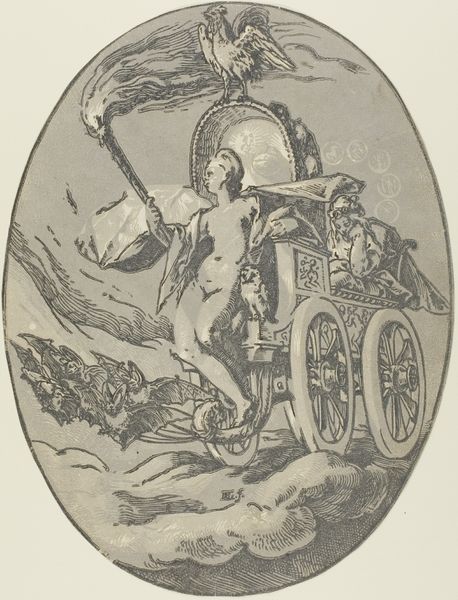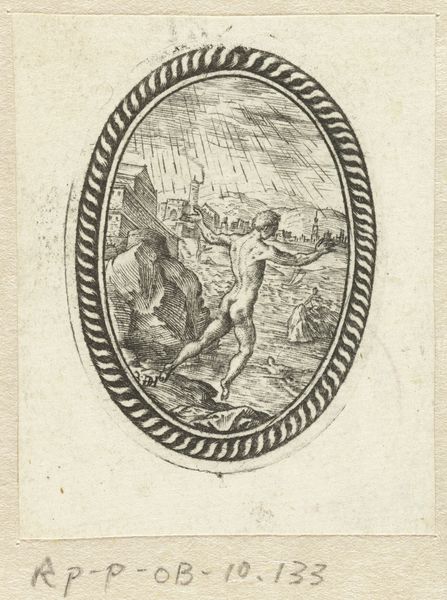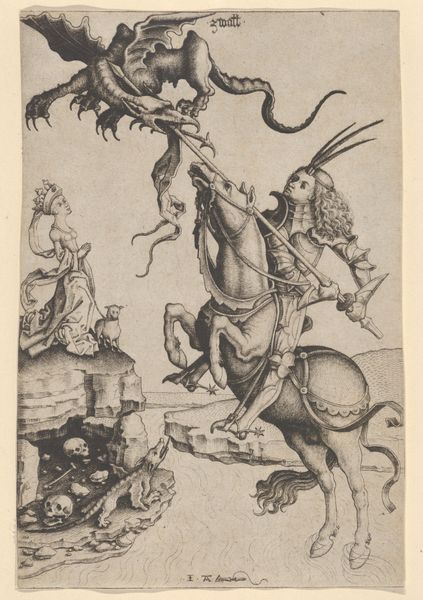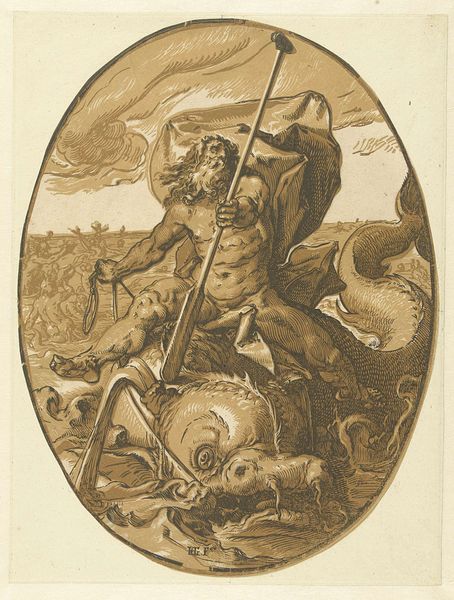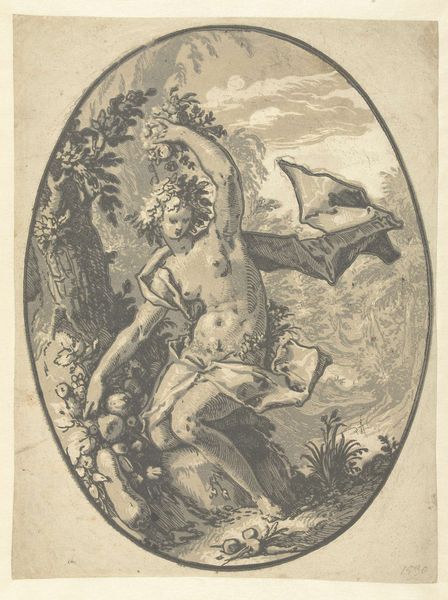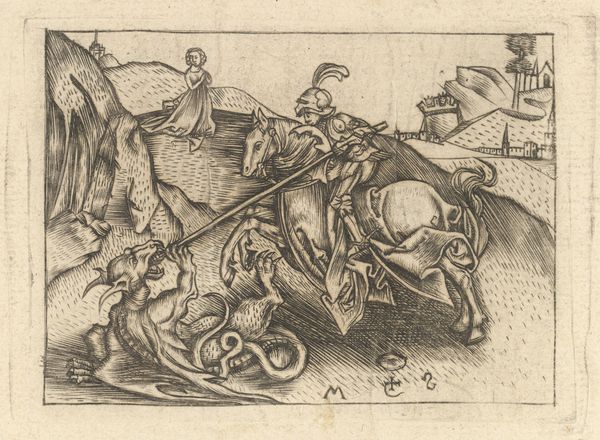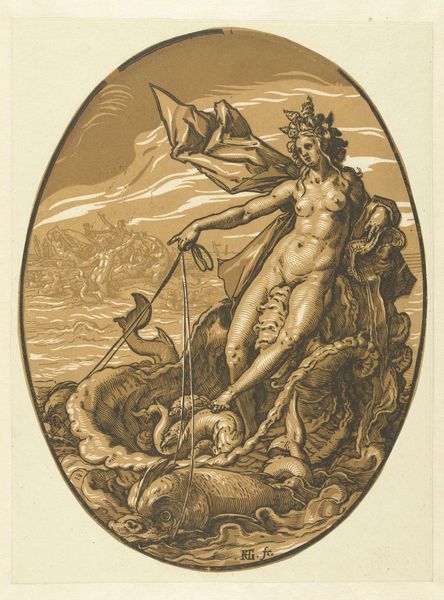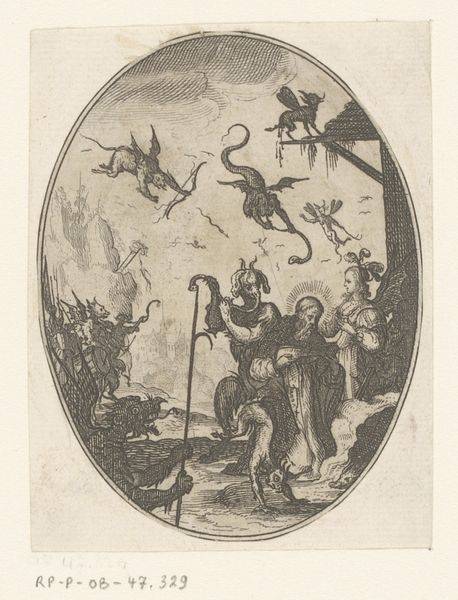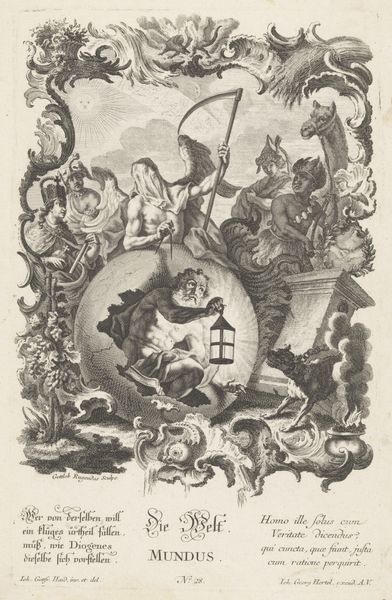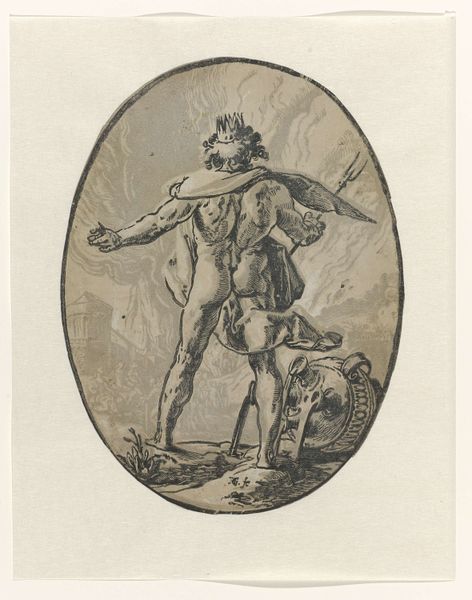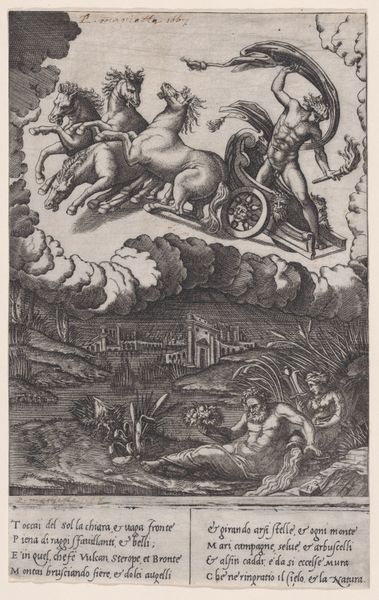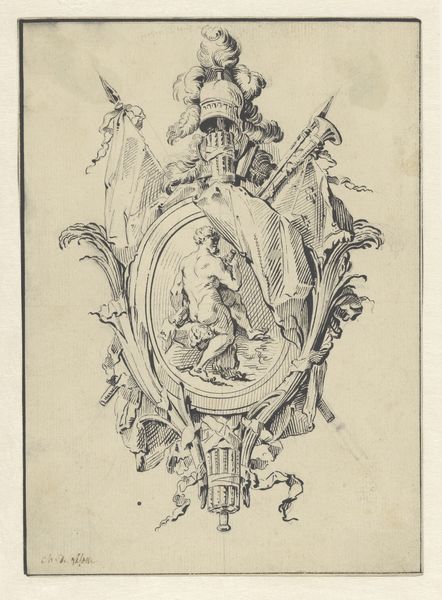
Nox, plate seven from Demogorgon and the Deities 1588 - 1590
0:00
0:00
drawing, print, paper, engraving
#
drawing
#
allegory
# print
#
caricature
#
caricature
#
mannerism
#
figuration
#
paper
#
pencil drawing
#
line
#
northern-renaissance
#
engraving
Dimensions: 347 × 263 mm (image); 408 × 340 mm (sheet)
Copyright: Public Domain
Curator: This is “Nox, plate seven from Demogorgon and the Deities,” a print created by Hendrick Goltzius between 1588 and 1590. It's currently part of the Art Institute of Chicago's collection. Editor: Intriguing! My first impression is how masterfully the artist utilizes line work. There's a dramatic swirling quality, enhanced by the oval frame—it nearly vibrates. What narrative unfolds within? Curator: Goltzius represents Nox, the Roman goddess of night. She rides in her chariot pulled by bats, holding a torch. Notice the rooster above her, announcing the coming dawn, and Somnus, god of sleep, dozing behind her. It's a beautiful allegory of the cyclical nature of night and day, but it's more than a simple binary. Editor: You’re right, it isn't that simple! The formal construction creates an almost uncomfortable tension. There is asymmetry in the positioning of figures, like the owl by the goddess and bats to the left, as they contrast with the right-side heaviness of Somnus. What statement do these placements generate? Curator: Given its historical context—the late 16th century, during a period of religious and political turmoil—Nox can be seen as more than just nighttime. She embodies a retreat, introspection, even darkness, that carries immense psychological weight. Even the choice of printmaking alludes to dissemination of powerful imagery—visual memory, widely shared. Editor: Absolutely, the medium amplifies this concept! It begs the question, how does Goltzius’s unique Mannerist approach impact our experience? That elongated figure of Nox seems a world apart from High Renaissance ideals of beauty. Curator: It is a striking distortion, one intended to evoke the unsettling power of night. It signals a movement away from rational balance and perfect proportions into something emotionally potent, perhaps even frightening. It taps into primordial fears of the unknown. Editor: So while ostensibly about night, the artist leverages structure and form to explore far deeper themes, making our visual and symbolic interpretations that much more enriching. Curator: Exactly. Ultimately, this image invites us to contemplate not only what is depicted, but the enduring human need to grapple with the darkness, both literal and metaphorical, using artistic form.
Comments
No comments
Be the first to comment and join the conversation on the ultimate creative platform.
